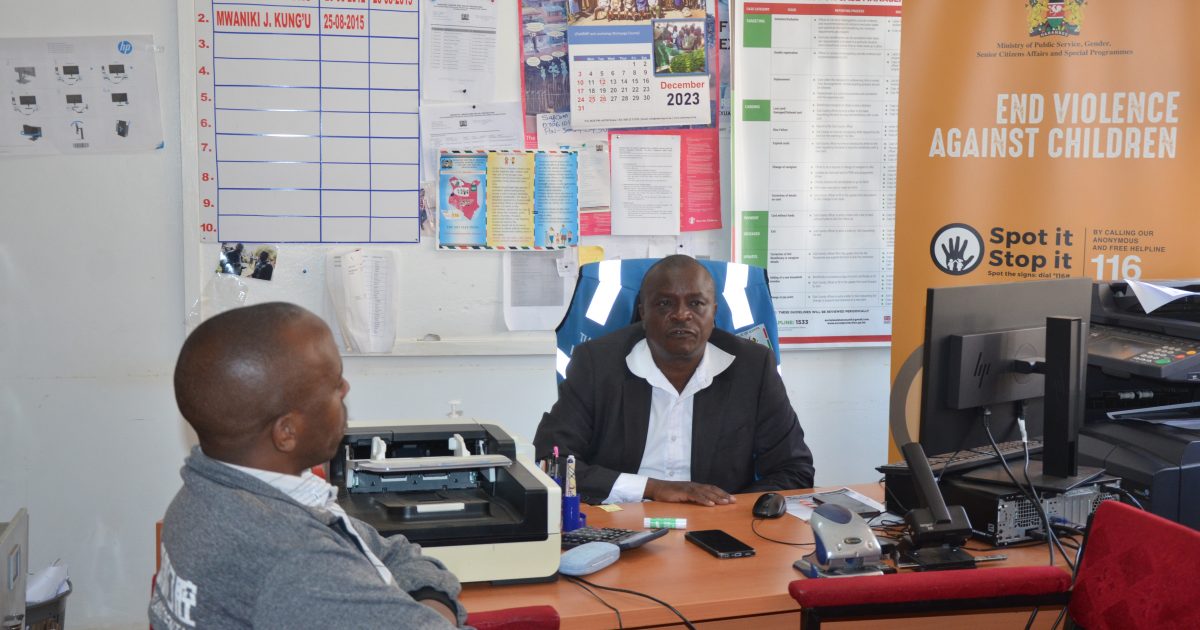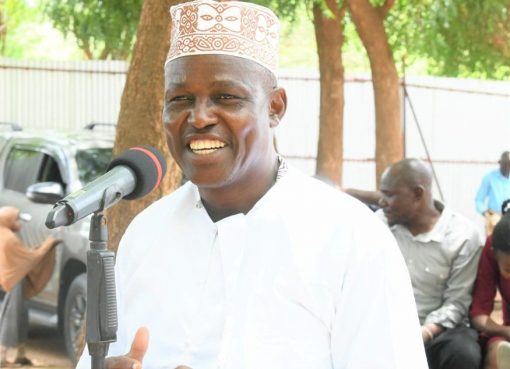A total of 12 foster care families have undergone training under the Government’s Care Reform Strategy for Kenya 2022–2032 Children Reintegration Program.
The decade-long process aims to, among others, relieve the burden of taking care of vulnerable children from Charitable Children Institutions (CCI) and reintegrate them back into families and the community.
The program, which is anchored under the Children Act of 2022, also hopes to turn the former CCIs into community facilities where former rescued children can visit to get guidance and counselling services and then go back to their homes.
Nyeri County Director of Children Services, Mwaniki Kung’u says his office has roped in all the relevant stakeholders in the program, including managers of all 28 CCI in the county, to ensure there is a seamless transition in undertaking the process.
“We have 28 Children Homes in Nyeri and all are engaged in this process. So far, we have trained 12 foster care families that are ready to take the children. We are doing the sensitization for all the stakeholders, including the police, the judiciary, parents, and churches, so that this project succeeds, because without the participation of all stakeholders, this can be sabotaged. It can fail,” he told KNA.
The officer has also debunked the myth that children in CCIs are better looked after compared to those in natural settings and vouched for the family as the ideal place to bring up children into responsible adults.
Mwaniki said that while children’s homes play a crucial role in the rescue and care of children salvaged from violent and abusive homes, the latter still remains the only haven that can guarantee such victims a sense of belonging and identity.
He said that what the government intends to do is promote the family whether biological or otherwise as the ideal remedy in addressing the challenges facing the country in terms of abused children residing away from their families.
“What we are talking about is called the Care Reform Strategy for Kenya 2022-2032. It is government-funded, and it is taking ten years, from 2022 to 2032.It is also captured in the transitional clauses of the Children Act of 2022. Basically, this is what we are calling de-institutionalization, or removing children from institutions, because research has shown that children growing up in such environments don’t develop as normally as other children who are brought up in family setups,” he explained.
But even as the government implements the program, some stakeholders operating CCIs want the process to be taken with caution to avoid running into headwinds.
They also want the State to reconsider the decision to abolish all privately run children’s homes and instead come up with measures that can enhance the safety and welfare of those living in unfriendly habitats.
Ms Ann Wambui who runs the Neema Children Rescue Center in Nyeri says while the government proposal might rid the country of bogus and illegal facilities masquerading as children havens, it may also end up leaving hundreds of rescued children with nowhere to call home.
Wambui also notes that while the government’s aim is to have rescued children integrated back into their families some of them might troop back into the streets where they came from or end up into the arms of the same people who used to molest them.
“It is good (to abolish children’s homes) because the children will be heading back to their relatives. But can you look on the other side? We rescue these children because they are abused by their relatives. Now you have taken them back to the strangers where they were being abused. What will be the consequences,” she poses.
Wambui similarly says the planned transiting may hit a snag owing to the fact that many of the children rescued are babies with health complications and need a safe haven where they can be given specialized care.
She therefore argues that were such homes and orphanages to be closed down, ailing children will be disadvantaged since few families or individuals will be willing to take up the burden of looking after them.
“I don’t think this is the best decision the government should have taken as some of these children in rescue homes were collected from diverse places after having been dumped by their parents. If we close down the very places they come to identify as home, where do they go from there?” she questions.
“I think the government should undertake an assessment and find if such homes are fine for the task they registered for. If not, they should show the administration of the homes how to go about it,” she has advised.
But Mwaniki insists all such fears have been addressed including the fate of what will become of the registered CCIs once they send the children to their future abodes.
He has also assured the public that the government will continue to cooperate with willing donors in providing the necessary assistance to such children even after they are placed in their future homes to enable them lead a normal life just like their peers.
“We are educating the management of these institutions (CCIs) because we have jobs to preserve, we have suppliers, we have so many other considerations. What will be left of these institutions? The institutions can be turned into Community Centers that can be hired for other purposes. We have a very robust policy where we are looking for alternative family care methods which include foster care and adoption. In the new Childrens Act there is what we are calling kinship adoption with supported headed households and these are measures that will ensure their safety when they are back in community and able to lead normal lives,” added Mwaniki.
In October last year CS for Labour and Social Protection Florence Bore announced plans by the government to abolish all privately owned orphanages and children’s homes within the next eight years.
Bore said only government-owned homes operating under the Child Welfare Society of Kenya will be allowed to operate in order to weed out private homes that had been turned into cells for child trafficking.
She said the children would be placed in family and community care, which offered a better environment for them.
“The reason why we are closing them up is because we have been given directions under the children’s Act that the private homes should be closed. They have also been routes for child trafficking, so the government wants us to retain the institutions that we have under the child welfare society of Kenya,” stated Bore.
“In the next eight years, those private homes will not exist. We need to prepare in order to absorb those children that will come from private homes,” she added.
Data from the Social Protection department shows that there were close to 50,000 children living in about 855 private charitable children’s institutions and others living in government-run institutions as of November 2022.
A 2017 UN children’s agency report estimated that 40,000 children lived in 811 registered institutions in Kenya.
According to the Children Act of 2022 placing children without families in alternative care such as guardianship, foster care placement and adoption will curb abuse and trafficking of children.
In 2017, a non-governmental organisation, Stahili Foundation, said that some orphanages and children’s homes in Kenya convince families to give away their children before using them to solicit donations.
By Samuel Maina and Molly Kendi



